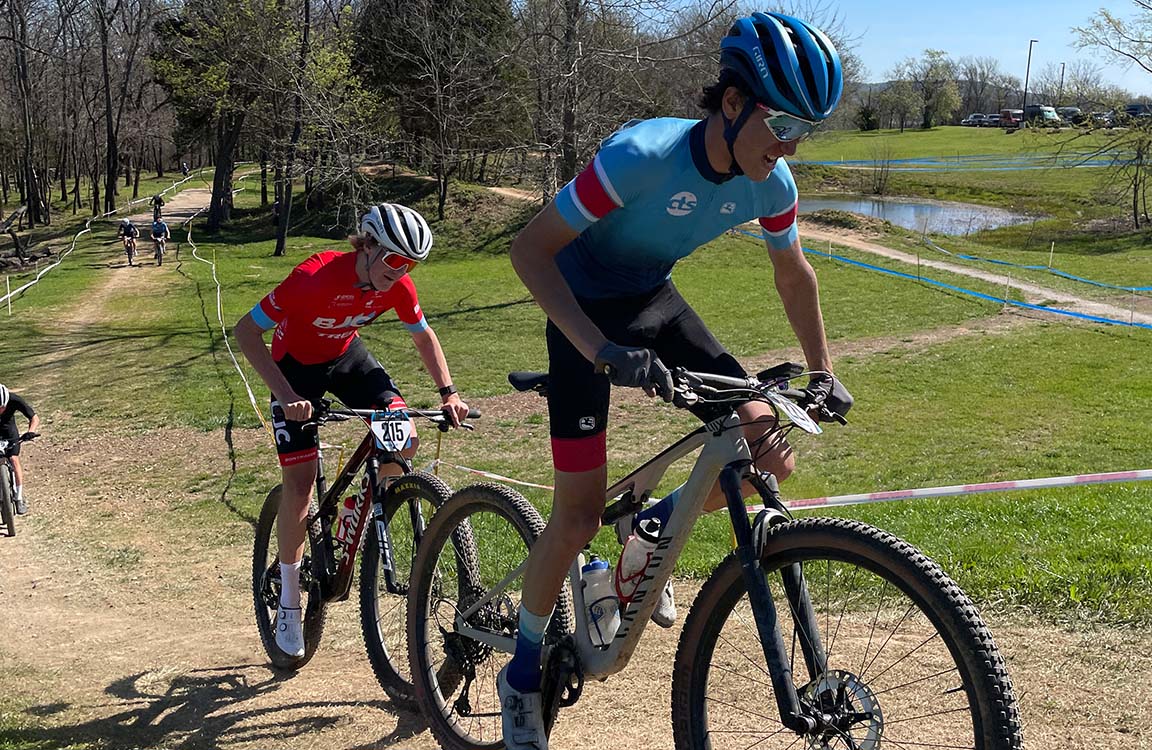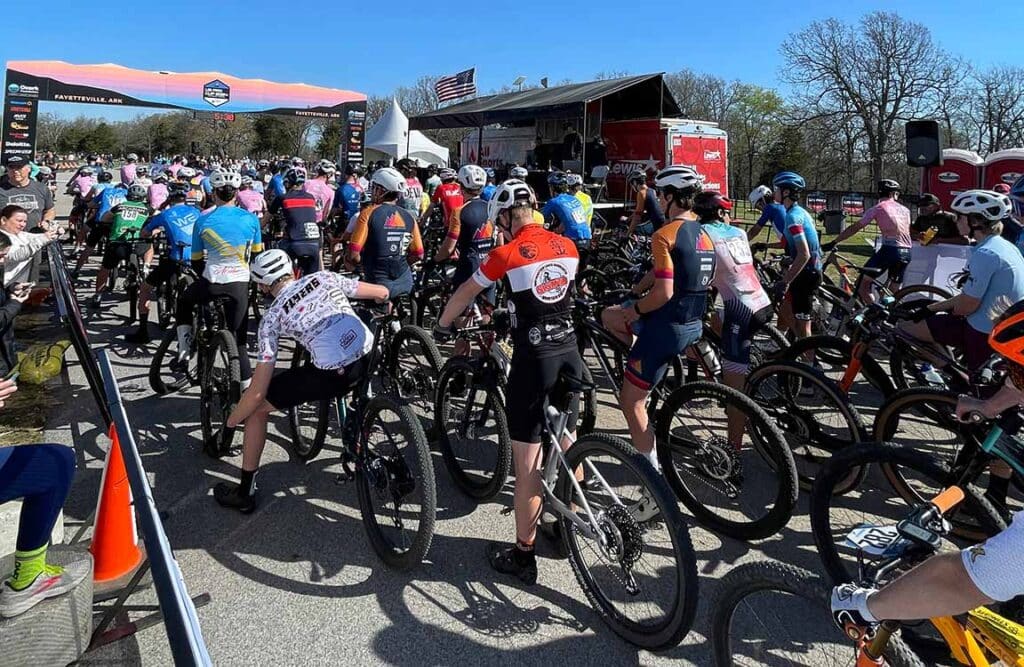
How to Get Kids Into Cycling and Junior Bike Racing
By Jim Rutberg,
CTS Pro Coach,
co-author of “The Time-Crunched Cyclist”,
“Ride Inside“ and “Training Essentials for Ultrarunning”
High school mountain bike leagues are transforming the landscape for Junior (racing age 18 and under) cycling in the United States. As cyclists ourselves, we are motivated to share our love for the sport with our children and other young riders. My 17-year-old son loves to race road, gravel, and mountain bikes. He has won a few prizes here and there, but just like every parent, I don’t know what his future holds. Nevertheless, people who know me as a cyclist and a coach ask what I’ve learned from guiding Oliver thus far.
This is not a column about how to develop a champion junior cyclist, because in the grand scheme of things I think we can all agree it’s more important to develop lifelong cyclists than to build champions. The champions will emerge through their own ambition, talent identification, and junior development programs, so long as we – as a community – create an environment that’s conducive to falling in love with cycling. And that’s happening…
Whether you go to a USA Cycling National Championships or the US Pro Cup mountain bike races, the Junior male and female categories are the biggest of all competitive fields. At the recent US Pro Cup in Fayetteville, Arkansas, the Junior Men 17-18 field for the UCI HC XCO started with 142 riders! Compared to modest representation from elite teams, the race venue was packed with tents and trailers from junior development teams around the country. A lot of the kids race for their high schools as well as the development teams, or on their own, and they have a great group of successful American road and mountain bike pros to look up to, including Matteo Jorgenson, Brandon McNulty, Luke Lamperti, Chloé Dygert, Kristin Faulkner, Haley Batten, Christopher Blevins, Riley Amos, Bjorn Riley, and more.
Feel Stronger in 6 Weeks — No Matter Your Age
Climbs feel steeper? Recovery slower?
You’re not done getting faster — you just need a smarter plan.
The 6-Week Masters Power Build Coaching Program is designed for cyclists 50+ who want to boost power, recover faster, and ride stronger — all with expert 1:1 coaching.
- Personalized 6-Week Training Plan
- 1:1 Coaching + TrainingPeaks Premium
- Mobility & Strength Bonus Guides
💪 Guarantee: Stronger or free.
Start your 6-week journey for $149If there’s a junior cyclist in your family or you’re trying to introduce cycling to a young person, or if you’ve decided to be a volunteer coach for a local high school mountain bike team or road/gravel development team, here’s what I’ve learned so far.
Make the “Play on bikes” phase last as long as possible
Oliver has watched me ride bikes his entire life and I was naturally thrilled to share riding with him when he was very little. He started “racing” BMX at 4 years old, learned to read thumbing through pages of cycling magazines, and jumped into trail rides with high school kids when he was still in middle school. Training was never a topic of discussion. Even when he learned what I do for a living and started to ask questions about training (in middle school), I actively redirected the conversation. He didn’t need to train, he just needed to go play on his bike.
Young kids change so quickly through normal physical maturation and brain development that I was confident he would progress naturally through riding to his heart’s content. The more he rode, the stronger he grew. The more he challenged himself (with some instruction and managed risks), the more his technical skills grew. The advice I’d give other parents of school-aged children is to surreptitiously make sure young athletes eat sufficient calories to support their activity level, learn to eat and drink during rides, and take rest days. They don’t need to know about calories, just feed them.
Encourage variety in sports and activities
I am not the ideal example of an active adult. I ride bikes, lift some weights, and don’t do much else. This is common of a lot of adult cyclists, but it is a poor model for young athletes to emulate. Every coach and expert I respect agrees that multi-sport participation and generalized conditioning is superior to early sport-specialization for children and adolescents. Child prodigies that go on to successful athletic careers – and more importantly, successful adulthoods – are the extreme anomalies.
As a young and very skinny adolescent, Oliver wanted to start strength training. I encouraged it, but with a caveat. Learning how to lift weights is the more important aspect of strength training for young athletes. I knew puberty would promote strength gains and muscle hypertrophy on its own, so the early focus was redirected to learning movements, getting the technique right, and discovering the mechanics of strength training.
Be careful what behaviors you model
This is most important lesson I’ve learned and that I encourage other cycling parents to embrace. Like many cyclists, I have developed some habits that work for me but are not necessarily admirable. For instance, I take unnecessary risks in traffic and probably have an unhealthy focus on my bodyweight. Oliver learned to ride on the road by following me and I didn’t recognize some of the habits I instilled until I saw him riding on his own. (We had a talk about that…) Similarly, I weigh myself every morning as part of the WUT (weight, urine color, thirst) protocol for monitoring day-to-day hydration status. But also because I care more about bodyweight than I should. When Oliver started stepping on the scale every morning, we had a talk, and I changed my routine.
► Free Cycling Training Assessment Quiz
Take our free 2-minute quiz to discover how effective your training is and get recommendations for how you can improve.
On social media I’ve long tagged photos of riding with Oliver with #growyourowntrainingpartner. As cyclists raising our peloton replacements, we must realize we’re modeling athlete lifestyle behaviors for them 24 hours a day. That extends to sleep, nutrition, time and priority management (relationships/career/school), sportsmanship and character, cycling citizenship and etiquette, and more. You don’t need to be perfect in every aspect, but it’s worth auditing your behaviors and modifying the ones you don’t want to see emulated.
Let the competitive drive develop on its own
When Oliver was maybe six years old and racing BMX, longtime Colorado Springs race promoter Bubba Hayes noticed me shake my head watching my son lallygag through the rhythm section. He gently advised, “Don’t worry, one day it’ll click.” Despite understanding enough about childhood development to know better, I had still fallen into the trap of wondering why a six-year-old wasn’t going for gold.
Of course, Bubba was right, and Oliver’s competitive drive developed in its own time. For some kids, it doesn’t, and that’s fine too. I think having ‘team’ and ‘club’ components is one of the smartest aspects of high school mountain bike leagues. If you want to ride but don’t care about racing, there’s a place for you, too.
Don’t coach your own kid
Oliver has surpassed the point where “go ride your bike” is sufficient to help him reach the goals he has set for himself. After discussing it with colleagues who run junior development programs and/or have kids at similar stages of development, I decided someone else was going to coach my kid. Thankfully, several of my colleagues at CTS have extensive experience coaching juniors, including Jason Siegle, Matt Freeman, Adam Pulford, Josh Whitmore, Colin Izzard, and more.
More often than not, parents who try to coach their kids to high performance outcomes compromise both the athlete’s longevity in the sport and their relationship with their child. My job is to be unconditionally supportive. Yes, I can help hold him accountable and provide guidance, but “Dad” is the only role I’m uniquely qualified for.
For more resources on youth sports and junior cycling, I recommend “Bike Racing for Juniors” by Kristen Dieffenbach, and content from Truesport.org and Positive Coaching Alliance.
► FREE Mini-Course: Learn How to Maximize Your Limited Training Time
Learn step-by-step how to overcome limited training time and get faster. Walk away with a personalized plan to increase your performance.
"*" indicates required fields




Comments 3
Pingback: 18 in Bike Age - eBikeAI
I was disappointed you didn’t mention NICA as a youth development organization geared to getting more kids on bikes – specifically mountain bikes. We have more kids riding, adventuring and racing than just about any other bike organization. We are not development teams, though some of our kids go on to race more competitively. Our goal is to build life long cyclists, not necessarily racers, get more girls on bikes and to build strong mind, body, character and communities through Interscholastic Cycling. Check us out at https://nationalmtb.org
Author
Debora,
You’re right. I chose to refer more generally to high school mountain bike leagues programs rather than refer specifically to NICA or the Colorado High School Cycling League (https://coloradomtb.org/) that we have in Colorado. Similarly, I didn’t refer to or recommend specific junior development programs (e.g., Front Rangers, Boulder Junior Cycling, Donovan Racing Development, Bear National, Hot Tubes, etc.). All of these leagues and development programs have similar goals to NICA (we’re all trying to accomplish the same thing). In my view, the takeaway is for kids and parents to engage with the reputable junior cycling resources available in their local area, whichever organization that is. – Jim Rutberg